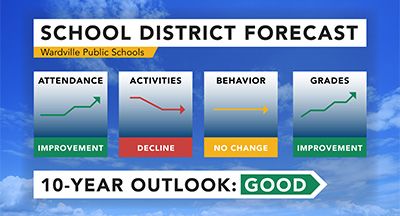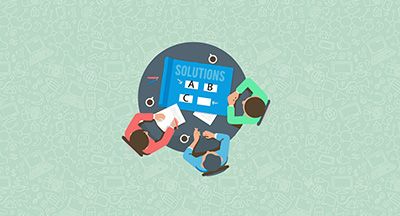Reading Automaticity is the Hidden STEM Superpower Kids Need
#Achievement
Erin Werra
by
Erin Werra

|
Erin Werra Edtech Thought Leader |

|

|

|
 |
A driver is constantly interpreting road signs, scanning for obstacles, and piloting a vehicle (not to mention the distractions drivers juggle as well). But we don’t actually think about driving much—not really.
A lot of the roadside sights of a typical commute become rather unremarkable, deliberately designed for drivers to process in a fraction of a second. Are we even really reading a road sign, or interpreting that a red octagon means something different than a green or white rectangle?
When drivers make driving look easy, they’re using automaticity: the ability to dedicate energy which would otherwise be spent decoding to more complex tasks like problem solving.
Reading automaticity refers to the automatic recognition of vocabulary words without the need to pause and sound out individual parts of the word, then add them together to form the whole word. Fluency is automaticity’s close cousin who adds a layer of personality to reading—fluent readers know that the addition of a question mark or exclamation point, as well as other punctuation, change the rate and inflection with which a sentence is read.
All this to say that these particular reading skills, when they’re well established, make reading easier no matter what the content is. While we tend to draw stark boundaries around our K12 subjects, awarding them their own set of different classroom supplies and categories (I can’t quite explain it, but science is green and English-Language Arts is red), educators have long realized that the great unifier of them all is reading. In fact, some have even proposed paying less attention to so-called fundamental reading skills, and instead integrating reading practice into content areas.
Breaking down automaticity: Both/and, not either/or
On the contrary, why ensure your gifted STEM students are also strong readers? Because the stronger the reading skills, particularly automaticity and fluency, the easier it is for students to build a strong command of written and verbal communication. In plain English, it’s going to help them do their job faster and better.As much as many workers in highly specialized careers would love to squirrel away into a cubicle and produce work entirely in our wheelhouse, the truth of the matter is that communication is the cornerstone of every single career—particularly if you’re like most professionals and desire to grow and develop your skills. And it’s not that weak communication skills can never be improved, but these so-called soft skills are some of the harder ones to train on the job. Building the foundation of strong communication is best handled in K12, to prime students for success in higher education, trade school, or career paths.
Now, let’s establish the importance of verbal communication, but acknowledge that written communication occurs more often than we think. This isn’t limited to correspondence between people. It’s also recordkeeping, documentation, creating instructions, interacting with third parties on behalf of an employer, and much more.
That written communication goes much, much faster when automaticity and fluency skills are on point.
Breaking down automaticity: Coding and decoding
In a classic chicken-and-egg situation, as we navigate the importance of sharpening a couple reading skills to boost STEM success, the concepts behind those skills go hand-in-hand with coding.Coding a computer program on the back end creates a way to transfer information from one place to another according to a specific set of rules. Decoding occurs once that data arrives and needs to be decrypted into language we can understand as end users, still following that specific set of rules.
Think of the rules we use when reading in English. (Mentally substitute any language with English, especially if you’d like a language example that has better rules. Yes, that is English major shade.) Students learn phonics to understand that each sound in a language has a corresponding written letter. We have vowels and consonants, which are different types of letters. We use a set of letters in a particular order that each make particular sound(s) called phonemes. Adding in different blends of letters and letter sounds, we start to form more complex phonemes. And so on and so forth, we learn the sounds that letters make which eventually lead to the mastery of words.
(Now, that’s obviously a gross oversimplification of the way we learn to read, the same way the space between point A and point B on a map is just a finger snap away. There are years of practice that solidify these concepts into students’ minds. Along the way, some students learn they have a barrier to achieving reading mastery the way their peers do, and these disabilities can make learning to read much more difficult for those students. However, that doesn’t mean those students cannot learn to read and cannot achieve automaticity—their version of mastery will require more supports and scaffolding.)
Breaking down automaticity: Phonemes and pattern recognition
Phonemic awareness (or phonological awareness) is the understanding that those sounds of the alphabet work together to form words.Phonemic awareness can even lead to pattern recognition.For example, the word ending “-tion” is a suffix associated with action or results of an action, and it sounds like “shun.” Now, we as readers can take a while, sound out the word and get tripped up in the phonetic sounds of each individual letter, or we can use phonemic awareness and automaticity to just know that “-tion” sounds like “shun” when it appears at the end of a word. We do it every day, and just don’t think about it—because it’s automatic.
The more opportunities students have to practice this type of phonemic recognition leads to automaticity: the immediate recognition that certain letters and letter groups make specific sounds.
Educators are always redesigning reading education strategies to help more readers become fluent. Pushing more and more reading practice into content fields helps students gain much-needed practice. These core reading skills hold unexpected importance to future career success regardless of the field—even for the most reading-averse STEM superstars in your schools.
Follow-up resource: What will the careers of tomorrow look like?
Find out where your skills might fit into the future career landscape.

|
Erin Werra Edtech Thought Leader |
|
|

|

|

|
 |










